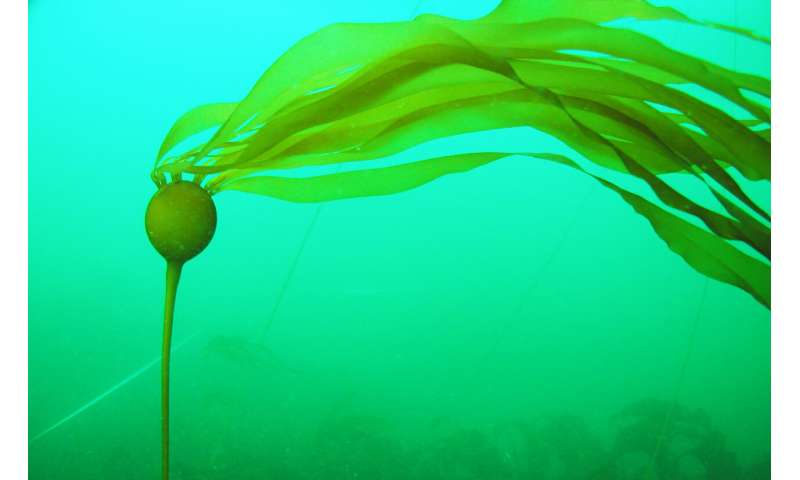Project will look for rare-earth elements in Southeast Alaska seaweed

A University of Alaska Fairbanks–led research team has been awarded a federal grant to explore whether seaweeds are absorbing rare-earth elements near a rich deposit in Southeast Alaska.
The study will focus on seaweeds in the waters near Bokan Mountain, a remote landmark on Prince of Wales Island known to contain rare-earth elements. Starting in March 2024, researchers will collect and analyze seaweed samples to determine whether significant amounts of metals that have washed into the ocean are being absorbed.
"We want to see if seaweeds accumulate rare-earth elements at a concentration that makes sense financially to recover them," said lead researcher Schery Umanzor, an assistant professor of marine biology at UAF's College of Fisheries and Ocean Sciences. "Seaweeds must act as sponges, with the elements showing up in higher concentrations than that in the water."
The project is part of a larger effort to expand the U.S. supply of rare-earth elements. REEs, which are critical components of many renewable energy technologies, are currently sourced mostly from sites in China.
Preliminary assessments have indicated that seaweeds can absorb REEs, Umanzor said, but it is unknown in what concentrations the metals exist and how difficult it would be to extract them.
The first year of the study will focus on wild stocks of seaweed and the amounts of rare-earth elements that collect in their tissues. If those results show promise, a second phase will focus on the potential for seaweed farms to gather rare-earth elements, including variations among different types of algae and growing conditions.
Extracting REEs from seaweed would need to be part of a large commercial food operation to be successful—even high accumulations would only yield a few dollars' worth of metals per ton of seaweed. But Umanzor described the potential of seaweed to be a low-impact alternative to mining as a "moonshot," with significant rewards if it's found to be viable.
"It has tremendous potential, but it has to be to scale," she said. "A mom-and-pop farm is not going to work."
A broad multidisciplinary team will study the issue, focusing on ocean geochemistry, chemical analysis of samples and potential locations for seaweed farming. Along with UAF, partners on the project include the University of Alaska Anchorage, the National Renewable Energy Laboratory, Seagrove Kelp, Ocean Rainforest and the National Oceanic and Atmospheric Administration.
Provided by University of Alaska Fairbanks